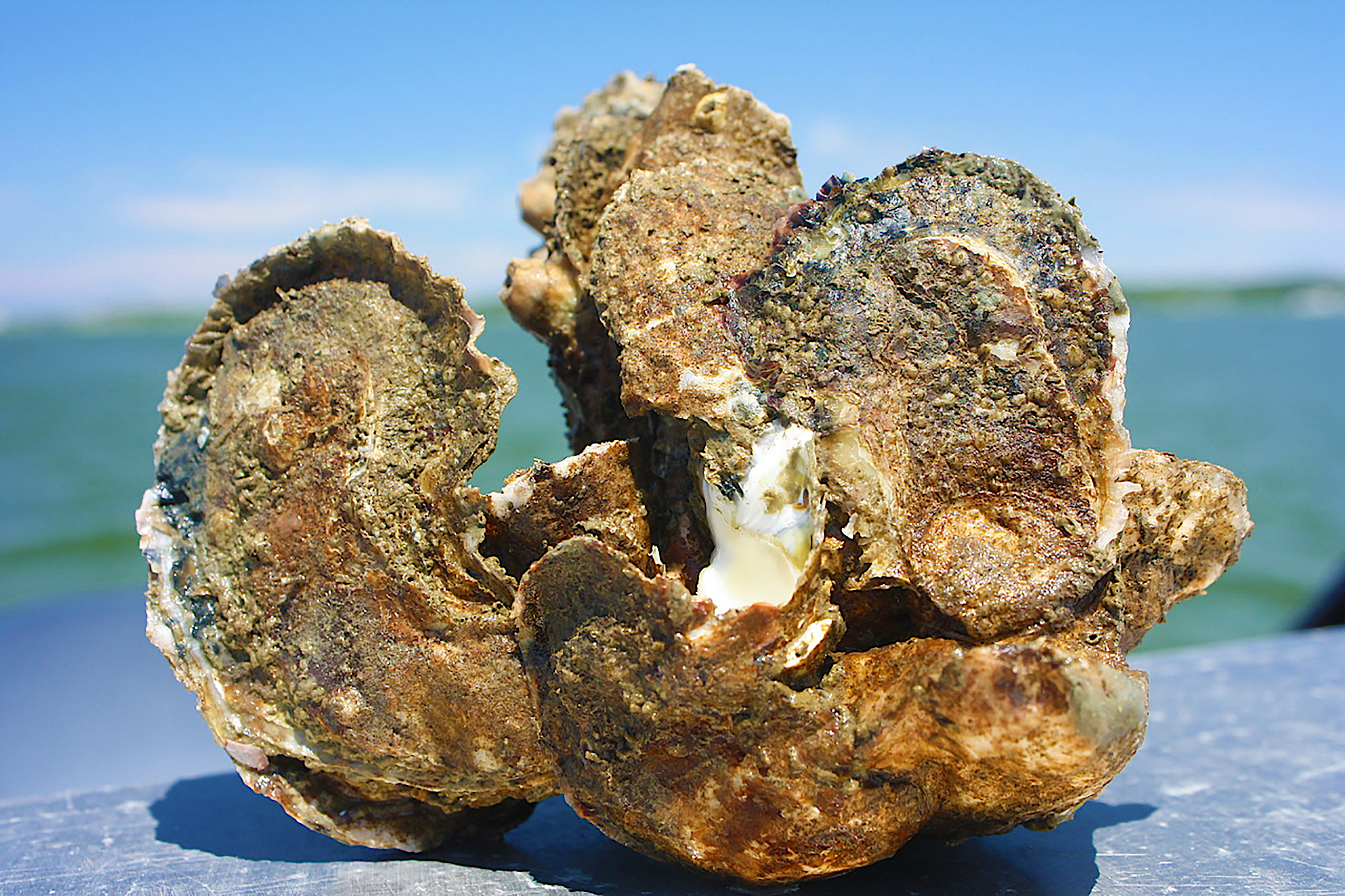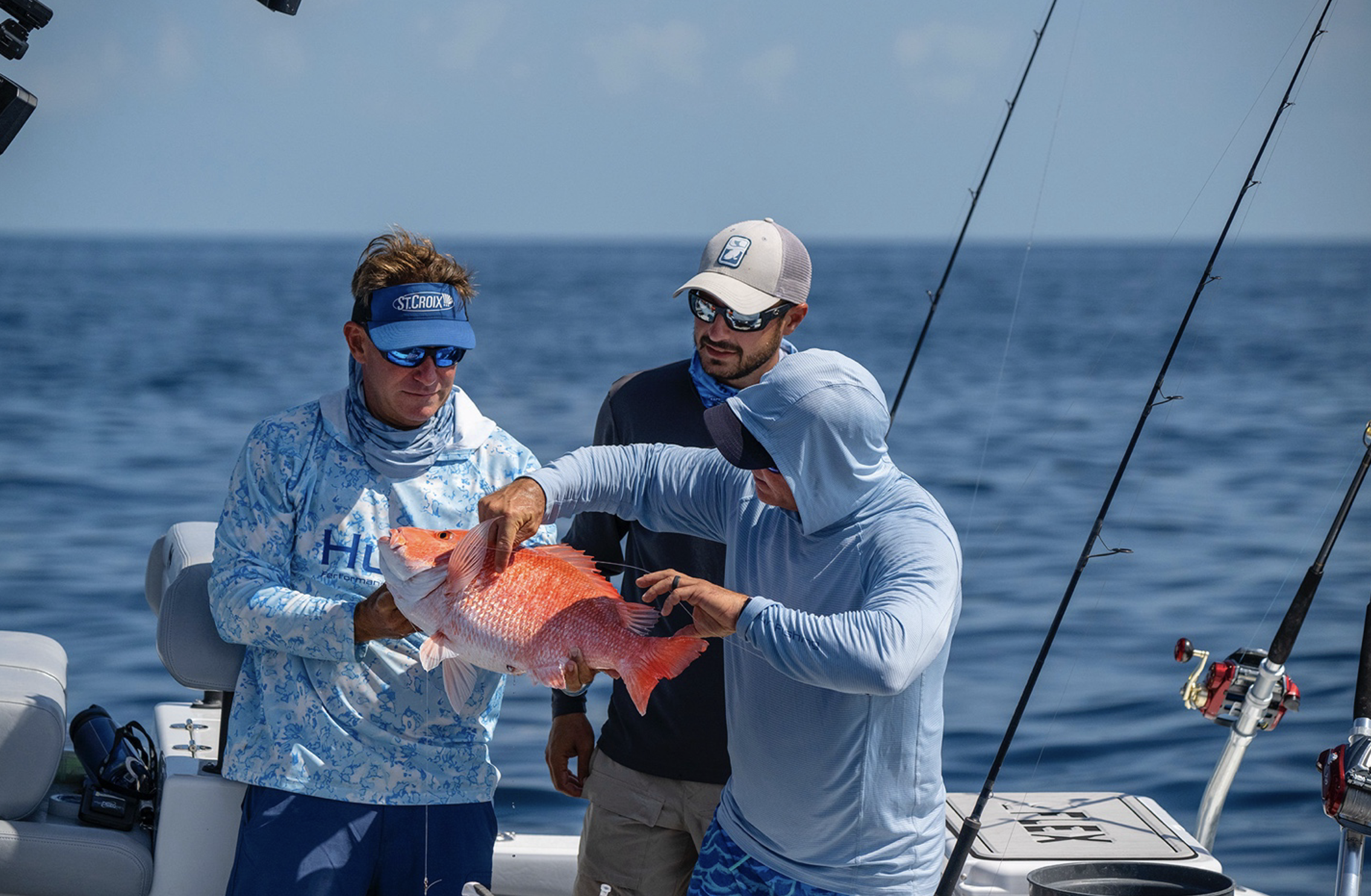Thanks to the food chain, one does better in the presence of the other.
Research Need
Oysters are an important component of the estuarine ecosystem, but their current abundance is only a fraction of what it used to be. Environmentalists, farmers, and consumers all want oysters to thrive in our coastal waters, whether wild oysters replenish themselves through natural reproduction, we add them to the environment with restoration projects, or grow them from seed to serve on the half-shell.
For oysters to be successful, we often think about things like water quality, location in relation to the ocean, and tidal exchange. An often-overlooked aspect of oyster survivorship is the impact of predators, like finfish and crabs.
Oysters don’t begin life as the three-inch, hard-shelled singles that you see in the restaurant. Depending on environmental conditions, oysters grow over years from seed to spat (larvae) to market size. During the early stages of growth, oysters can be especially susceptible to predators.
Common residents on Gulf of Mexico oyster reefs are juvenile stone crabs and sheepshead. Juvenile stone crabs are known to eat oyster spat, and sheepshead are known to eat a variety of prey, including juvenile stone crabs.
As oyster lovers, should we be aware of the impact that predators such as these can have on oysters?
What did they study?
In 2020, researchers on Dauphin Island, Alabama, set up controlled laboratory tank experiments to understand how predators affect early survivorship of oyster spat. To do this, the research team observed and measured the interactions between 100 oyster spat, one sheepshead, and 10 juvenile stone crabs in tanks under these scenarios: (1) fish and crabs, (2) crabs, (3) fish and oysters, (4) oysters, (5) fish and crabs and oysters, and (6) crabs and oysters.
The team looked at how oyster and crab survival varied across treatments, while accounting for differences in salinity, dissolved oxygen, and temperature.
What did they find?
With no predators present, 99% of oysters survived. Similarly, 100% of juvenile stone crabs survived.
However, when juvenile stone crabs were introduced to the tank with oysters, oyster survival decreased to 84%.
But in situations where sheepshead were introduced to the tanks along with oysters and crabs, crab survival decreased by as much as 50% and oyster survival remained at 99%.
Anything Else?
The researchers determined that in the absence of sheepshead, it would take the 10 juvenile stone crabs 12 days to consume all 100 oyster spat. If this rate held true in the real world, 10 crabs could consume 250 oyster spat in 30 days.
In this study, sheepshead consumed juvenile stone crabs and oyster spat, but oyster spat to a much lesser degree. The team speculates that sheepshead might have targeted oyster spat less often due to the small amount of energy to be gained from this meal.
So What?
Oyster reefs are dynamic and complex environments. Given that the population levels of predators like sheepshead can change, this could impact things we don’t often consider – like oyster spat survivorship.
Reading
McCall, Merritt, Mark A. Albins and Sean P. Powers. The common predator, Sheepshead (Archosargus probatocephalus), enhances survival of the Eastern oyster (Crassostrea virginica) in an experimental setting. Journal of Experimental Marine Biology and Ecology 568 (2023) 151945. https://doi.org/10.1016/j.jembe.2023.151945
BY SCOTT BAKER
lead image credit: NOAA.
The text from Hook, Line & Science is available to reprint and republish at no cost, but only in its entirety and with this attribution: Hook, Line & Science, courtesy of Scott Baker and Sara Mirabilio, North Carolina Sea Grant.

- Categories:




